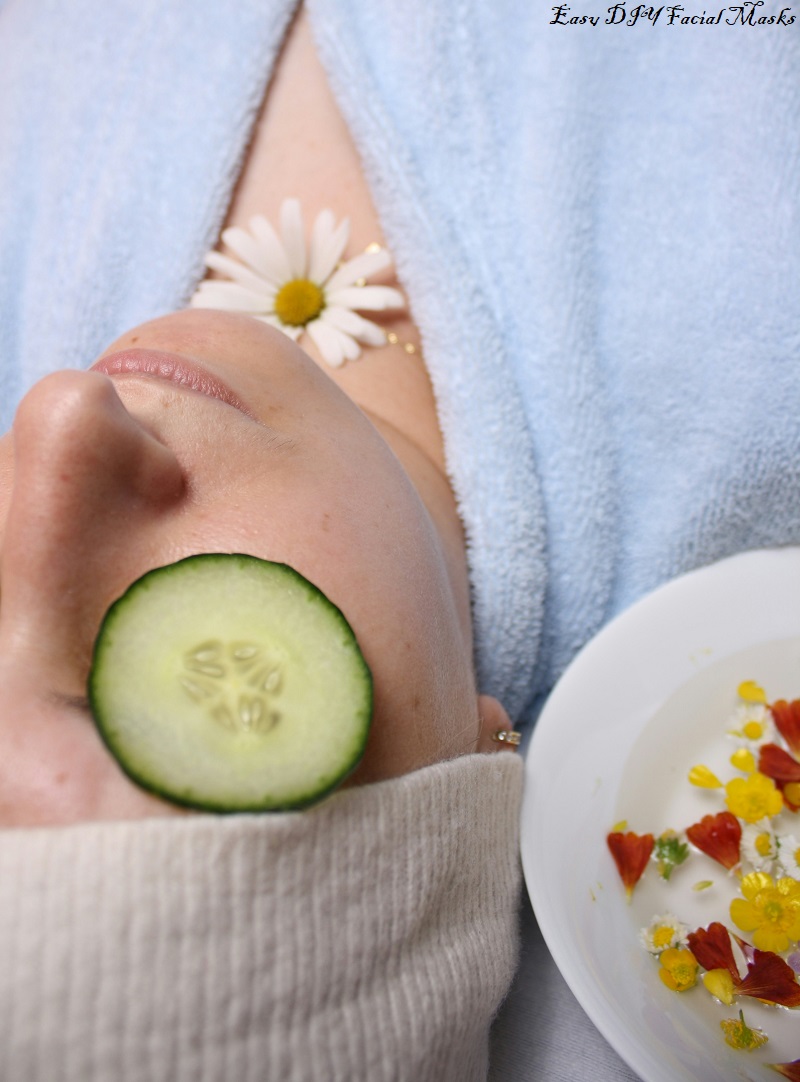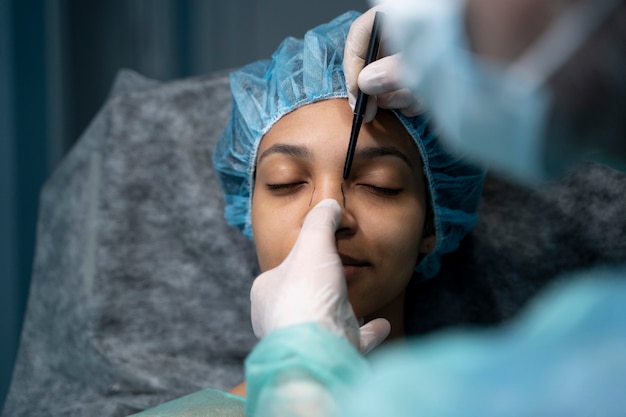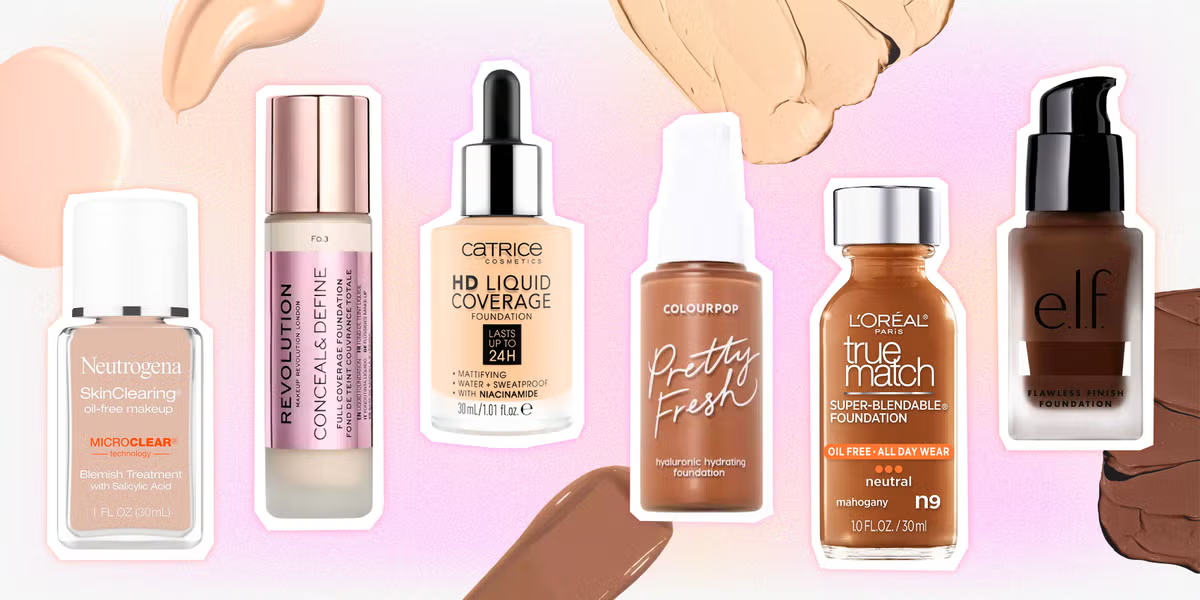Skin
Quick and Easy DIY Facial Masks

Maintaining healthy, radiant skin requires regular skincare, and using a face mask is one of the finest ways to treat yourself. But when you can make your own, why spend money on pricey store-bought goods? Using natural products that you most likely already have in your home, DIY facial masks are a quick and simple way to meet your skin’s demands.
What Makes a Good Facial Mask?
The components are the key to a successful face mask. Nutrient-dense natural ingredients like honey, yogurt, avocado, and clay help moisturize, cleanse, and brighten your skin. You may make masks that are suited to your skin type and issues by mixing the appropriate ingredients.
Benefits of DIY Facial Masks
Why choose homemade face masks? You have complete control over what appears on your face, and they’re convenient and reasonably priced. Additionally, they don’t include artificial chemicals or preservatives that can irritate delicate skin. Whether you have dry, oily, or acne-prone skin, there is a do-it-yourself remedy for you.
Quick Tips Before You Start
Always conduct a patch test on a small section of your skin prior to using any mask to make sure you won’t experience an adverse response. To enable the chemicals to fully penetrate your skin, thoroughly cleanse it.
DIY Facial Masks for Dry Skin
Honey and Avocado Mask
For dry skin, this moisturizing mask is a godsend. Avocado is full of fatty acids that soften and nourish the skin, while honey is a natural humectant, which means it attracts moisture to the skin.
The recipe is as follows: Mash half an avocado and stir in 1 tablespoon honey. After applying it to your face, wait 15 to 20 minutes. Use lukewarm water to rinse.
Oatmeal and Yogurt Mask
Yogurt contains lactic acid, which gently exfoliates and leaves your skin feeling soft and supple, while oatmeal calms inflamed skin.
To make it: combine two tablespoons of plain yogurt and two tablespoons of oatmeal. After applying evenly to your face, rinse it off after 15 minutes.
DIY Facial Masks for Oily Skin
Clay and Apple Cider Vinegar Mask
Apple cider vinegar balances the pH of the skin, while clay is great at absorbing excess oil.
How to prepare it: Mix one tablespoon of apple cider vinegar with two tablespoons of bentonite or kaolin clay. After applying, rinse off after ten to fifteen minutes.
Egg White and Lemon Mask
Lemon juice regulates the production of oil, while egg whites tighten the skin and minimize the appearance of pores.
Method: Beat one egg white with a few drops of lemon juice. After ten to fifteen minutes, wash the product off your face.
DIY Facial Masks for Acne-Prone Skin
Tea Tree Oil and Aloe Vera Mask
This mask is ideal for acne-prone skin because tea tree oil has strong antibacterial properties and aloe vera reduces irritation.
To prepare it: combine two tablespoons of aloe vera gel with a few drops of tea tree oil. Before washing, apply to the afflicted regions and let them sit for fifteen minutes.
Turmeric and Honey Mask
Turmeric reduces inflammation, and honey combats bacteria. When combined, they brighten the skin and lessen acne.
To prepare it: combine one tablespoon of honey with half a teaspoon of turmeric. After applying, rinse after ten to fifteen minutes.
DIY Facial Masks for Sensitive Skin
Cucumber and Aloe Vera Mask
Aloe vera soothes inflamed skin, and cucumber cools and moisturizes.
To create it: blend two teaspoons of aloe vera gel with half a cucumber. After 15 minutes, apply and rinse off.
Chamomile and Oats Mask
Oats gently exfoliate sensitive skin without irritating it, while chamomile has anti-inflammatory qualities.
How to prepare it: Make a cup of chamomile tea, then combine one tablespoon of ground oats with two tablespoons of the tea. Rinse after ten minutes after application.
DIY Brightening Facial Masks
Papaya and Honey Mask
Honey adds hydration, and papaya’s abundance of enzymes exfoliates and brightens the skin.
To make it: mash a papaya slice and stir in a tablespoon of honey. Rinse off after 10 to 15 minutes of application.
Banana and Turmeric Mask
Turmeric evens out skin tone and minimizes discoloration, while bananas moisturize and nourish.
The recipe is as follows: Mash a banana and stir in half a teaspoon of turmeric. Rinse after applying and wait 15 minutes.

DIY Anti-Aging Facial Masks
Egg White and Honey Mask
Honey adds hydration and egg whites tighten the skin, making this a powerful anti-aging combination.
To make it: whisk together one egg white and one tablespoon of honey. Before washing, apply to your face and let it sit for 15 to 20 minutes.
Green Tea and Yogurt Mask
Yogurt’s lactic acid exfoliates and smoothes fine wrinkles, and green tea’s abundance of antioxidants combats free radicals.
How to make it: Mix two teaspoons of green tea with one spoonful of yogurt after brewing a cup of it and allowing it to cool. Rinse off after 15 minutes of application.
How Often Should You Use DIY Facial Masks?
Depending on your skin type, use these masks one to three times each week for optimal effects. Dry and sensitive skin should only be used once or twice a week, although oily and acne-prone skin may benefit from more frequent use.
Do’s and Don’ts of Using DIY Facial Masks
. Patch-testing new ingredients is a must.
. Avoid using masks for longer than is advised.
. Make sure you utilize fresh ingredients.
. Avoid placing masks too near the eyes.
Storage Tips for DIY Masks
Aloe vera gel and premade masks can be kept in the refrigerator for up to a week, but the majority of DIY masks should be used fresh. Use a clean container at all times.
Conclusion
Making your DIY face masks is a great method to treat your skin without going over budget. You may treat a variety of skin issues in a customized, chemical-free manner by adding these natural, simple-to-make masks to your routine. Keep in mind that the secret to long-lasting success is persistence.
FAQs
- How long do DIY facial masks last?
While some can be kept in the refrigerator for up to a week, the majority should be consumed right away. - Can I mix ingredients for different skin benefits?
Indeed, you may customize your masks by mixing substances that work best for your skin type. - What’s the best mask for glowing skin?
A papaya and honey mask works wonders for skin that is radiant and vibrant. - Are DIY masks safe for all skin types?
In general, yes, however, if you have sensitive skin, always do a patch test. - Can I use these masks daily?
To prevent over-exfoliating or irritating your skin, it is best to apply them one to three times per week.
Skin
The Rarest Type of Nose: An Exploration of Distinction

The nose, a centerpiece of human physiognomy, stands as a hallmark of individual identity. While its primary functions—facilitating respiration and detecting aromas—are universal, the diversity in nasal forms is both staggering and fascinating. Some nose shapes dominate populations, while others are so rare they elicit wonder. But what, precisely, constitutes the rarest type of nose? Let us traverse the realms of anatomy, genetics, and cultural resonance to uncover the answer.
Anatomy and Variation: The Underpinnings of Nasal Uniqueness
Before delving into the extraordinary, it’s essential to comprehend the fundamental structure of the nose and the elements shaping its distinctiveness.
Structural Components of the Nose
- Nasal Bones: Form the upper bridge, lending foundational rigidity.
- Cartilage: Confers flexibility and shapes the tip and lateral contours.
- Nasal Septum: Divides nostrils, ensuring balanced airflow.
- Soft Tissue: Adds curvature and dynamic movement to the nose.
These elements, influenced by heredity, ethnicity, and environment, orchestrate a nose’s architecture.
Determinants of Nasal Morphology
- Genetic Blueprint: Nasal shape emerges from an intricate genetic interplay.
- Ethnic Adaptation: Ancestral climates mold nasal forms; slender noses prevail in frigid zones, while wider noses dominate humid locales.
- Age and Trauma: Time and injuries can subtly transform nasal aesthetics.
Recognizing Familiar Nose Types
Common nasal shapes abound across global demographics. Understanding these helps us appreciate the uniqueness of rarer forms.
- Roman Nose: Distinguished by a prominent, gently arched bridge; often depicted in classical sculpture, prevalent in European lineages.
- Button Nose: Petite and rounded with a slightly uplifted tip, often evoking youthful charm.
- Straight Nose: A linear bridge devoid of dips or curves, revered for its symmetry.
- Nubian Nose: A broad base coupled with an elongated bridge, celebrated within African diasporas for its striking allure.
- Hawk Nose: This shape exudes boldness, featuring a pronounced downward curve reminiscent of a raptor’s beak.

A rarity in Nasal Forms
Rare nasal configurations arise from genetic anomalies, evolutionary adaptations, or developmental peculiarities.
Noteworthy Rare Noses
- Fleshy Nose: Bulbous with pronounced soft tissue, less prevalent than streamlined shapes.
- Celestial Nose: Marked by a concave bridge and uplifted tip, its rarity lies in the pronounced upward tilt.
- Pinched Nose: A slim and tapered form, occasionally the result of surgical intervention or specific genetic traits.
The Pinnacle of Rarity: Uncommon Combinations
The rarest nose transcends individual traits, merging several uncommon attributes into one visage. For instance, a celestial nose paired with a profoundly sharp tip and exaggerated curvature is exceptionally unusual.
Genetic Conditions Yielding Unique Noses
- Binder Syndrome: Leads to an underdeveloped nasal bridge.
- Pierre Robin Sequence: Affects facial structure, creating recessed nasal features.
Cultural Perceptions of Rare Noses
Societal lenses magnify the significance of rare nose shapes, attributing symbolic and aesthetic value across epochs.
- In Media and Fashion: Unique noses captivate audiences, positioning their bearers as icons of individuality.
- Historic Standards: Ancient Egyptians prized slender noses for their perceived elegance, while Roman society lauded aquiline noses as emblems of authority.
- Contemporary Movements: Social media champions diversity, fostering an appreciation for distinctive features.
Genetics: The Architect of Nasal Rarity
Heredity and Evolution
- Inheritance Patterns: Unusual features often emerge from recessive traits passed discreetly through generations.
- Evolutionary Influence: Narrow noses, adapted for frigid air, and broad noses, efficient in humid climates, showcase humanity’s adaptability.
Surgical Crafting of Rare Noses
Modern rhinoplasty offers the possibility of replicating rare nasal forms, albeit with caution.
- Rhinoplasty Trends: Precision is paramount when emulating rare features.
- Balancing Risks: Overcorrection risks functional issues, underscoring the need for moderation.

Embracing Nasal Uniqueness
Whether common or extraordinary, the nose is a personal signature. Celebrating its individuality fosters self-acceptance and underscores humanity’s rich tapestry of diversity.
Conclusion
The rarest nose type defies singular definition, arising from a confluence of exceptional traits shaped by heredity, environment, and cultural perceptions. Its rarity enriches the spectrum of human beauty, reminding us that uniqueness is a virtue worthy of reverence.
FAQs
- What governs nasal shape?
Hereditary factors, cartilage structure, and environmental influences shape nasal appearance. - Can nasal shape evolve over time?
Yes, age and physical trauma can alter its form. - Are rare noses universally admired?
Attractiveness is subjective; rare noses often gain admiration for their distinctiveness. - Can surgery replicate rare shapes?
Yes, but achieving natural-looking results requires meticulous precision. - What’s the most prevalent nose type?
Button and Roman noses are among the most ubiquitous globally.
Skin
Eczema and Psoriasis on the Feet: Visuals, Root Causes,

Eczema and psoriasis stand among the most prevalent skin disorders affecting individuals across the globe. When these conditions manifest on the feet, they can cause significant discomfort and pose aesthetic dilemmas. This article delves into the origins, manifestations, and remedial options for eczema and psoriasis of the feet, supplemented by illustrative depictions.
Understanding Eczema: How It Manifests on the Feet
Defining Eczema and Its Underlying Triggers
Eczema, medically termed atopic dermatitis, is a chronic dermatological ailment characterized by inflammation, redness, and relentless itching. Common catalysts include allergic reactions, environmental irritants, and inherited predispositions.
Symptoms of Eczema on the Feet
- Parched, fissured skin.
- Reddened and swollen areas.
- Persistent itch, often intensifying nocturnally.
- Formation of vesicles in severe instances.
Visual Representations of Eczema on Feet
Individuals afflicted may observe inflamed, reddened patches or blistering. Imagery frequently aids in accurate visual diagnosis.
Psoriasis: A Chronic Autoimmune Condition with Distinctive Features
What Defines Psoriasis?
Psoriasis emerges as a chronic autoimmune disorder, spurring the overproduction of epidermal cells. This surplus accumulates, forming plaques frequently observed on the feet.
Manifestations of Psoriasis on the Feet
- It thickened, flaky skin.
- Reddish plaques are often veiled with silvery scales.
- Painful fissures or cracks in the skin.
- Nails may exhibit changes indicative of nail psoriasis.
Visual Evidence of Psoriasis on Feet
Typical depictions reveal heavily scaled skin with a silver-tinged overlay, highlighting the distinctiveness of this condition.

Differentiating Between Eczema and Psoriasis
Key Visual Contrasts
- Eczema: Features redness, oozing vesicles, and pronounced itchiness.
- Psoriasis: Exhibits dry, flaky plaques with silvery layers.
Diverging Etiologies
Eczema is often rooted in allergic hypersensitivity, whereas an autoimmune response drives psoriasis.
Treatment Modalities for Eczema and Psoriasis
Managing Eczema
- Moisturizing Agents: To counteract dryness.
- Topical Corticosteroids: For reducing inflammation.
- Allergen Avoidance: Identifying and steering clear of triggers.
- Natural Remedies: Coconut oil or colloidal oatmeal baths for soothing relief.
Treating Psoriasis
- Topical Applications: Corticosteroids or Vitamin D derivatives.
- Phototherapy: Exposure to UV light.
- Systemic Medications: Biologics or oral therapies for advanced cases.
- Home Solutions: Aloe vera or saline baths to ease symptoms.

Preventive Strategies for Eczema and Psoriasis on Feet
Skincare Routine
- Daily hydration with emollients.
- Use of gentle cleansers to avoid irritation.
Avoidance of Triggers
- Wearing breathable footwear.
- Mitigating stress, a known exacerbator of psoriasis.
Conclusion
Eczema and psoriasis affecting the feet can profoundly impact the quality of life. Through precise diagnosis, bolstered by visual indicators, and effective treatments, sufferers can find substantial relief. Consistent skin care and proactive avoidance of known triggers are indispensable in preventing recurrences.
FAQs
- How does foot eczema differ from fungal infections?
Eczema often presents as redness and dry skin, while white patches and a pungent odor typically mark fungal infections. - Can children develop eczema or psoriasis on their feet?
Yes, eczema is especially common among younger individuals. - What is the typical duration for treating foot psoriasis?
Treatment timelines vary based on severity, with chronic cases requiring long-term management. - Is it possible to have both eczema and psoriasis concurrently?
Although rare, it is feasible to experience both conditions simultaneously, necessitating distinct treatment plans. - Is there a definitive cure for psoriasis?
While psoriasis cannot be eradicated, its symptoms can be effectively managed through appropriate interventions.
Skin
Best Drugstore Foundations for Oily Skin and Full Coverage

Finding the perfect foundation for oily skin, especially with full coverage, can feel like a tall order. Luckily, drugstores offer a treasure trove of affordable options that provide a flawless finish and extended wear without excess shine. For those with skin prone to oiliness, choosing a foundation that balances lightweight coverage with oil control is essential. Here’s a guide to help you discover the best pharmacy foundations for oily skin that also deliver comprehensive coverage.
Why Oily Skin Requires Specialized Foundation Care
Oily skin naturally produces more sebum, which can reduce the longevity of makeup and create unwanted shine throughout the day. Selecting an unsuitable foundation can exacerbate these issues, leading to a heavy sensation, undesirable gloss, and even clogged pores. Opting for a foundation tailored specifically to with full coverage capabilities, allows you to mask imperfections while maintaining a lasting matte finish.
Key Considerations for Selecting the Best Foundation for Oily Skin
- Matte Finish: Essential for reducing shine and managing excess oil production.
- Long-Wearing Formula: Ensures your look holds up throughout the day.
- Non-Comedogenic Composition: Helps prevent breakouts by keeping pores clear.
- Adjustable Coverage: Allows for a customizable finish without overburdening the skin.

Top 5 Drugstore Foundations for Oily Skin and Full Coverage
1. L’Oréal Infallible Pro-Matte Foundation
L’Oréal’s Infallible Pro-Matte Foundation is renowned for its matte effect and long-lasting wear. Its lightweight, breathable formula offers adjustable coverage that conceals flaws without clogging pores. With a smooth texture and easy application, it’s perfect for those seeking full coverage minus the heavy feeling.
Key Features:
- Long-lasting matte finish.
- Non-comedogenic formula.
- Maintains coverage even in hot or humid conditions.
2. Maybelline Fit Me Matte + Poreless
The Fit Me Matte + Poreless is a popular, budget-friendly option among individuals with oily skin. Its formula is crafted to minimize pore visibility and control shine throughout the day. This foundation adapts to various skin tones, offering buildable coverage that ranges from light to medium.
Key Features:
- Lightweight, non-greasy texture.
- Shine control for a natural matte look.
- Extensive shade range to suit all skin types.
3. Revlon ColorStay Foundation for Combination/Oily Skin
The Revlon ColorStay Foundation is a top choice for those seeking full coverage with an immaculate finish. Formulated for combination with oily skin types, it provides up to 24 hours of wear without compromising comfort. With added mattifying agents, it absorbs excess sebum, ensuring a smooth, shine-free complexion.
Key Features:
- Full coverage with a matte finish.
- Water and sweat-resistant.
- Long-wearing, transfer-resistant formula.
4. NYX Can’t Stop Won’t Stop Foundation
NYX’s Can’t Stop Won’t Stop Foundation offers high coverage with a lasting matte effect. Its lightweight, non-comedogenic formula is ideal for oily skin, helping to keep an even, shine-free tone. Available in an extensive shade range, it’s perfect for those looking for customizable coverage with effective oil control.
Key Features:
- Lightweight formula suited for oily skin.
- Wide variety of shades for a precise match.
- Designed to hold up all day without retouching.
5. Covergirl Clean Matte BB Cream for Oily Skin
While technically a BB cream, Covergirl’s Clean Matte provides excellent coverage in a light, comfortable formula. Its mattifying composition controls shine without blocking pores, making it a great option for a natural yet polished look. Ideal for days when you prefer lighter makeup while still covering blemishes.

Key Features:
- Oil-free formula to minimize shine.
- Suitable for sensitive, acne-prone skin.
- Buildable light to medium coverage.
Tips for Perfect Foundation Application on Oily Skin
- Prep Your Skin: Cleanse and moisturize with oil-free products before applying makeup. Proper skin care aids in prolonging foundation wear.
- Use a Mattifying Primer: Primers specifically for oily skin help control oil production and extend foundation longevity.
- Apply in Thin Layers: Avoid a cakey effect by applying foundation in thin layers. Add more only where needed for extra coverage.
- Set with a Translucent Powder: Use a mattifying powder to lock in the foundation and reduce shine. Translucent powders are ideal for achieving a natural finish without adding color.
- Finish with a Setting Spray: A setting spray can add extra hold, perfect for long days or special events.
Conclusion
Finding the right foundation for oily skin and full coverage doesn’t have to break the bank. Drugstores offer a range of high-quality options tailored to the unique needs of oily skin. By selecting the right product and following a few key application techniques, you can achieve a lasting, matte, and shine-free look throughout the day. Experiment with different options to find the perfect match for your skin type and coverage preferences.
-

 Skin9 months ago
Skin9 months agoNatural Oil-Free Face Moisturizer Reviews & Buyers Guide
-

 Hair3 weeks ago
Hair3 weeks agoDoes a Flat Iron Kill Lice? Fact or Myth?
-

 Hair9 months ago
Hair9 months agoDoes a Flat Iron Kill Lice? Fact or Myth?
-

 Skin8 months ago
Skin8 months agoAbout Face Beauty: Tips for Enhancing Your Natural Beauty
-

 Hair9 months ago
Hair9 months agoFunction of Beauty: Personalized Hair Care for Your Unique Needs
-

 Hair9 months ago
Hair9 months agoTitanium Flat Iron vs. Ceramic
-

 Skin8 months ago
Skin8 months agoBeautiful Nails: Tips and Tricks for Healthy and Gorgeous Nails
-

 DIY Cosmetics8 months ago
DIY Cosmetics8 months agoEmpire Beauty School:
